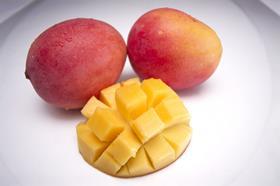
With the Australian mango season well and truly underway, Perfection Fresh is preparing for a bumper harvest for its Calpyso variety.
Chief executive Michael Simonetta said its Calypso harvest will be drawn out this year. “Calypso harvest started earlier than last year, and we are looking at a longer season overall with good volumes.
“Our main regions of the Northern Territory and Far North Queensland are both looking good with consistent flowering and fruit set thanks to ideal weather conditions,” he added.
From an industry wide perspective, Australian Mango Industry Association (AMIA) chief executive Brett Kelly told Fruitnet the early signs suggest the 2021 crop will mirror that seen in 2020, in which the industry picked its smallest crop in seven years.
“We are forecasting 5m trays from production situated in Australia’s north, but we are still yet to receive forecasts from the production regions in Queensland,” Kelly explained.
“In terms of varieties, we are hearing reports that growing conditions for Calypso, R2E2 and Honey Gold have been favourable, while Kensington Pride appears to be patchy across regions.”
Promotions keep pace
Simonetta highlighted Perfection Fresh’s marketing campaigns in export markets this season would centre on consumer awareness.
“We will focus on giving shoppers visibility close to the point of purchase in store, as well as working with partners with a strong online presence given the increased share of trade online has with premium consumers in these markets,” he explained.
Exports continue despite freight issues
AMIA’s Kelly said the industry’s export strategy this season will be similar to the season prior, with planned and committed sales to protocol markets taking priority, complemented by opportunistic exports.
“Airfreight capacity will be limited this year and the Australian mango industry welcomes the extension of the International Freight Assistance Mechanism (IFAM),” he noted. “Last season, overall export volumes dropped by 40 per cent. However, exports increased in some of our protocol markets including China, Korea and the US.”



